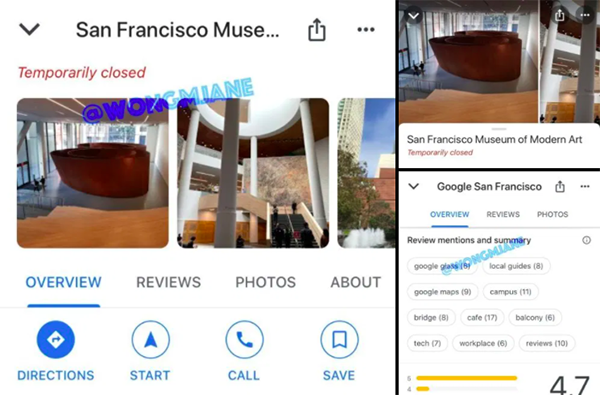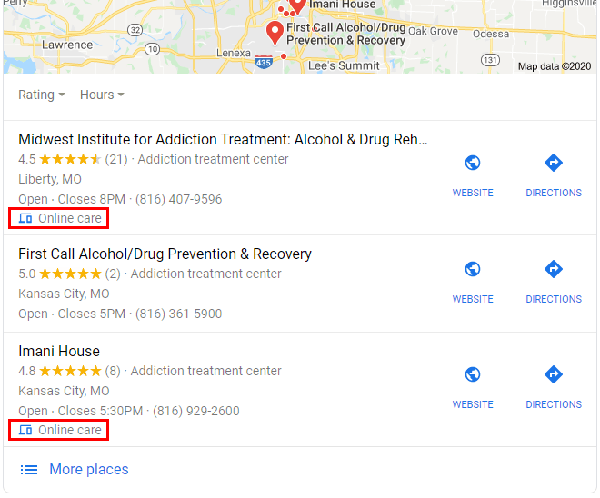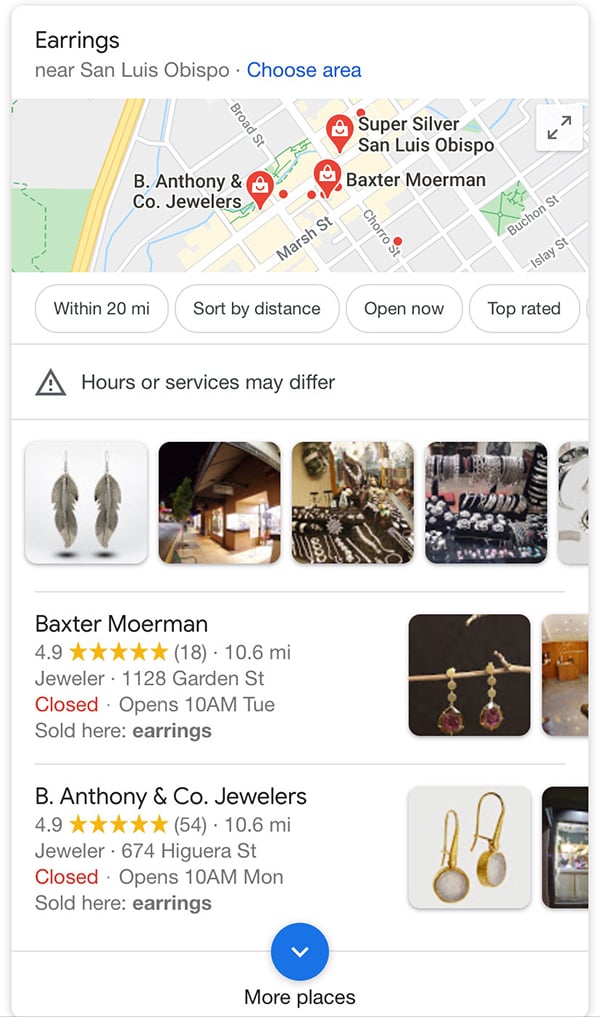Damian Rollison | Jun 22, 2020 7:00:00 AM
5 Min Read
In this week’s update, learn about new Google Maps features; the online care attribute appearing in search; GMB recommendations for online offerings; how to interpret GMB Insights; new image carousels in the local pack; and e-commerce gains during the pandemic.
Jane Wong, a hacker based in Hong Kong who is well known for ferreting out new app features before they are announced, has detailed several new features she believes are forthcoming in Google Maps. The first is a feature designed to make commuting more streamlined -- once commuting becomes a reality again. The feature helps Maps users coordinate between public transportation and various options for “first mile” transportation to the train, subway, or bus that will take them most of the way to their destination, such as driving to a train station or taking an Uber to the subway.
Google Maps will also reportedly offer information directly in the app about ride fares from Uber and other ride sharing services, as well as bicycle sharing services like Bay Wheels in San Francisco.
Wong also highlights some minor UI updates that may appear soon in Maps, such as a modified design for the search bar, as well as a change that will be of interest to those engaged in reputation management at the local level: a set of common keyword tags appearing above reviews that will allow users to navigate quickly to reviews containing those words and phrases.

Display of keywords from reviews, courtesy Jane Wong
Tom Waddington has spotted the online care attribute in local pack results for the first time, accompanied by a custom icon that is different from the green checks and red X’s showing next to most prominent attributes in recent months, such as pickup, delivery, and dine-in for restaurants. The online care attribute applies to listings in various healthcare categories and indicates that online services are available. Healthcare providers can also offer links to online care and telehealth through a separate URL field in their GMB profiles.

Image courtesy Tom Waddington
Google has made some significant updates to the GMB help page titled “Guidance for businesses affected by COVID-19.” In particular, the section that covers attributes relevant to the pandemic, such as pickup and delivery, has been broken into two subsections, one covering food and retail categories and the othe for service-oriented categories.
The subsection on service-oriented categories offers guidance for online services that may be used to replace or augment services that in normal times would be available in person, such as online classes, appointments, or estimates. The help page specifies that the new online service attributes are available only to businesses that also have a physical brick-and-mortar presence, and that online-only businesses remain ineligible for GMB profiles. Virtual services may include telephone consultations. Online service attributes will be displayed prominently in search.
Another new GMB help page goes into more detail about online services linked to physical stores and offices. This page reiterates some of the recommendations in the previous page, and adds information about Reserve with Google, the program that allows consumers to book appointments directly within GMB profiles in collaboration with approved vendors.
Joy Hawkins has updated her popular post that discusses how GMB Insights should be interpreted. In the post, Hawkins explains the meaning of Insights metrics such as searches and views, and covers some recently added metrics, such as the “Message you” metric that measures how many people have reached out to a business that has enabled the messaging feature in the GMB app. She notes that businesses using third party services like Podium to manage messages will not see these visits reflected in the “Message you” metric.
The post goes on to explain several similar nuances that are worth knowing about. For instance, Hawkins explains that the table titled “Queries used to find your business,” which contains unique counts of various keyword searches that have surfaced your business listing, is updated less frequently than other metrics, so you should not consider that the “1 quarter” selection in the timeline dropdown, for instance, actually represents the last three months. In fact, it merely represents that last three months of data available.
Hawkins also clarifies that GMB Insights do not currently track searches that originate from voice-based interfaces such as Google Assistant and Google Home.
As reported yesterday by Mike Blumenthal, Google has begun displaying a carousel of images within the local pack for some shopping-related searches. The carousel displays up to 5 images, giving the user the ability to swipe to see all of them, and at least the first few images appear to be linked to the intent of the search.
I was able to reproduce this finding easily, suggesting that the rollout was quick and widespread. Here, for example, is my search result for “earrings san luis obispo” in Chrome on iPhone, with carousels displayed for all three results. I’ve swiped left in the first result to display the range of images. Notice that in all three results, the first photo actually shows earrings that can be purchased at the shop in question.

Local pack showing image carousels for shopping result
As I’ve discussed elsewhere, local search results have been differing more and more by vertical in recent months, and Google has been paying particular attention to photos in shopping related verticals. This new feature only underlines the importance of photos highlighting important products as a component of a strong local SEO strategy.
In a recent interview on Yahoo Finance, MasterCard senior adviser and former Saks CEO Steve Sadove discussed changes in consumer spending habits due to coronavirus, noting that e-commerce spending has surged by $53 billion during the pandemic and has doubled its percentage of all sales, a massive gain in such a short period. E-commerce sales made up 22% of all sales in April and May, up from 11% in the same period last year.
Sadove noted that although the return to shopping at malls and stores is occurring slowly and gradually, there are some promising signs. He points in particular to the higher conversion rate of shoppers who do visit stores, due to the motivation of shoppers who only venture out when they are sure of what they intend to buy.
Sadove’s comments illustrate the need for brick and mortar businesses to embrace a hybrid online-offline model and to make it as convenient as possible for shoppers to complete transactions.
Topics: Monday Memo

VP of Market Development and Strategic Partnerships
Offer Post Justifications Spotted in Local Results
Oct 4, 2021 8:47:46 AM
Monday Memo: More than Brands and Influencers, Consumers Trust Each Other
Sep 27, 2021 7:56:34 AM
Monday Memo: Google Adds “Latino-Owned” to GMB Identity Attributes
Sep 20, 2021 7:58:58 AM
Monday Memo: New Study Shows 94% of Consumers Use Online Business Directories
Sep 13, 2021 7:16:55 AM
Monday Memo: The Page Experience Update Has Fully Rolled Out
Sep 6, 2021 7:43:45 AM